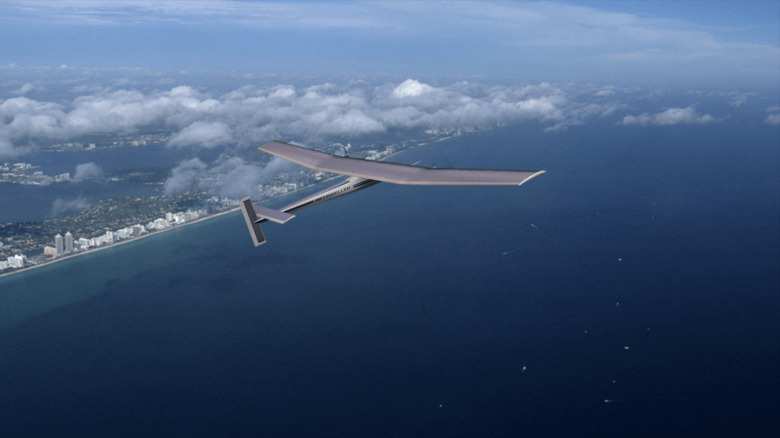
Aviation startup Skydweller Aero has successfully tested a drone that has a larger wing span thana Boeing 747For almost three consecutive days -- and then repeated the feat. Throughout the entire period, it was powered solely by photons and electrons. The company's stated objective is to ultimately reach "perpetual" flight, where the drone would only need to land when maintenance is required. Skydweller, indeed.
The latest trials were carried out by the Naval Air Warfare Center Aircraft Division (NAWCAD), the drone's primary potential buyer. The Navy is keen on what a Skydweller could contribute to its activities in Southern Command (SOUTHCOM), which includes Mexico, Latin America, and surrounding waters. Equipped with multiple sensors, a Skydweller could scan for piracy, drug smuggling, or other unlawful actions.
Of course, many drones and other aircraft are already available that can perform that task. Skydweller's standout feature is its impressive flight duration, which is exceptionally remarkable. For comparison, the RQ-4 Global Hawk drone, which has a wingspan of 131 feet, can only remain airborne for approximately 30 hours. In recent tests, the Skydweller managed to fly for as long as 74 hours, according to reports.Nola.com. This primarily relates to the way the two are refueled: while the Global Hawk uses a turbofan engine that needs traditional jet fuel, the Skydweller is entirely electric... and solar-powered.
Refueling in Mid-Air Using the Sun
Although the Air Force possesses aerial refueling capabilities through the KC-135 and the more recent KC-46 aircraft, Global Hawks and other unmanned drones are not designed to take fuel from these planes. There is a rationale behind this: as drones frequently operate in dangerous zones and aim to remain unnoticed, having a large jet fly over to refuel them is not practical. Therefore, the Global Hawk must return to its base for refueling.
In contrast, the carbon fiber Skydweller doesn't have a gas tank at all, but instead carries 1400 pounds of batteries, which make up 25% of its maximum capacity weight. Even more impressive are the features on those massive wings — 17,000 solar cells that generate 100kW of power. During the day, this is sufficient to operate the four propellers, avionics, and up to 800 pounds of sensor equipment. It can also charge the batteries, which it uses to continue flying throughout the night. Recharge in mid-air the following day, fly another night; recharge in mid-air the next day, fly another night. This is what the recent tests showed. Once again, the objective is continuous flight, which opens up a wide range of possibilities.
The Benefits of Not Touching Down

For the military, the applications here are quite evident. Want to monitor an enemy base continuously? Let a Skydweller circle nearby indefinitely. Or is there a location where a terrorist leader might appear at some point? Simply position a Skydweller there and have it notify you when he arrives. Ongoing patrols are also a solid choice, as well as a form of backup GPS functionality.
But Skydweller Aero shows that it also has commercial goals. For instance, sensors could be utilized for scientific studies as well. Meanwhile, SpaceX's Starlink offers internet access to anyone, anywhere, but it's alsoblinding our telescopesand causing congestion in low earth orbit —it makes up 60% of all satellites!Skydwellers could reside in remote locations and offer users fast internet connectivity without encountering those problems. There's significant profit to be gained from an endeavor that never lands on the ground.
Want more like this? Join the Jalopnik newsletterto receive the newest automotive updates directly in your email...
Read the original article on Jalopnik.
